In the vast palette of options for interior decoration, few materials can transcend ephemeral trends. Few materials can convey luxury and elegance while maintaining a timeless presence like marble. This metamorphic rock, with a rich history and impressive varieties, remains a sublime choice for those seeking more than aesthetics. Marble is an enduring expression of elegance.
"Marble is a dialogue between human artistry and the timeless beauty of nature."
Renzo Piano, Italian architect
From Ancient Greece, where marble adorned magnificent temples and sculptures, to contemporary days, where architects incorporate it in innovative projects and interior designers value pieces in this material, marble remains a symbol of refinement and luxury. In addition to fashion, trends, and variations in taste, marble resists the test of time with grace and power.
The diversity of marble is one of its most notable characteristics. From the reddish veins of Estremoz to the intense drama of Nero Marquina to the transparency of Thassos, each type of marble tells a unique story of geological formation. As architect David Chipperfield says, “in every vein of marble, we find a story that spans millennia”.
In this article, we will explore the presence of marble in modern interior design, its adaptation to different decorative styles, and some practical considerations, such as maintenance and sustainability.
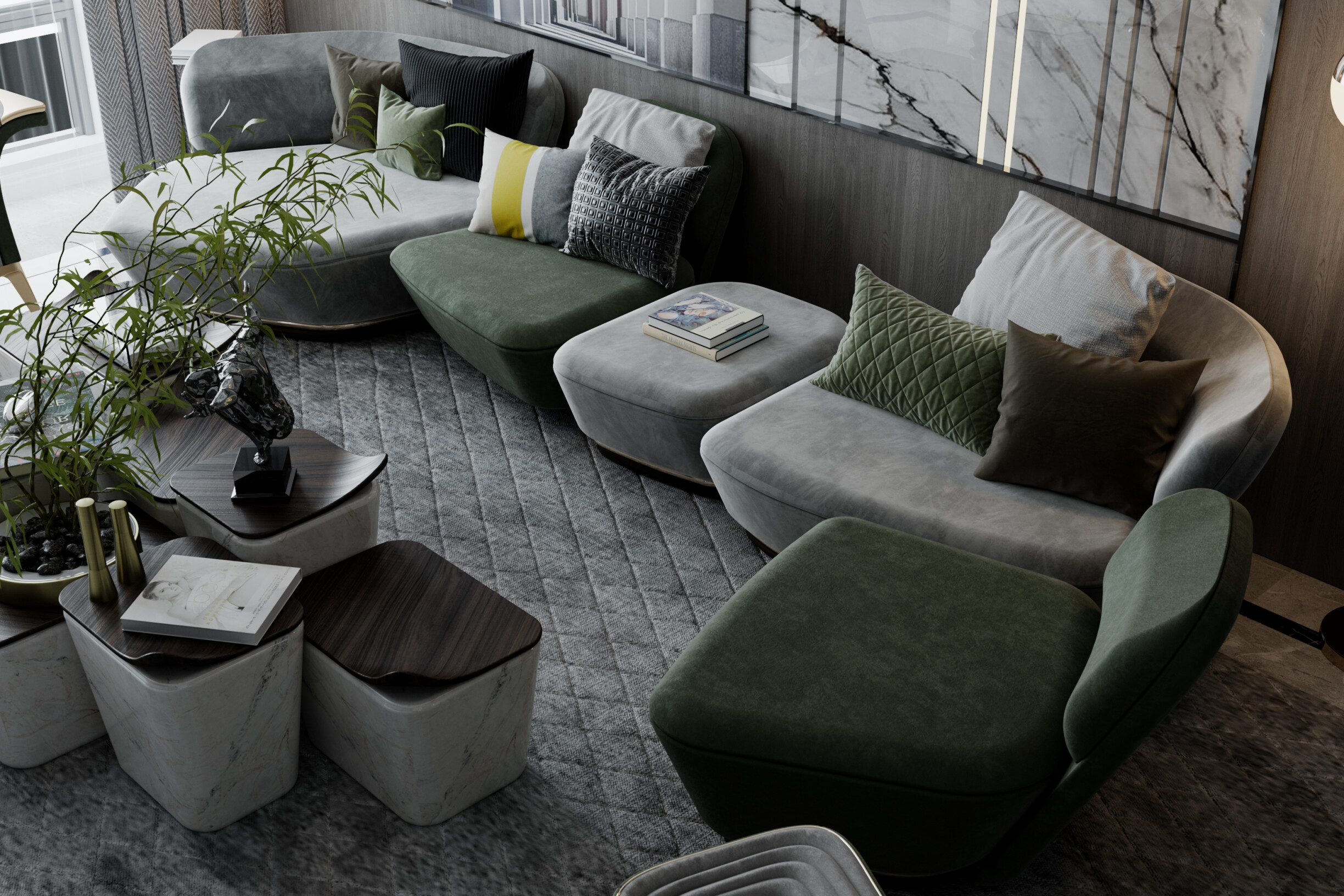
The journey of marble in decoration dates back to antiquity. If we go back to Greece and Rome, marble was used in sculptures, columns, and paving. Grand temples like the Pantheon in Athens were adorned with marble. Sculptures of gods and goddesses, such as the Venus de Milo, were carved in marble.

Over the centuries, marble became synonymous with sophistication and refinement, adorning palaces and residences of the Renaissance nobility. In the Victorian Era, marble became the centerpiece of interior decoration, reflecting the taste for opulence and extravagance. Marble fireplaces, richly detailed floors, and ornamental statues stood out in Victorian halls.
Marble found its way through different cultures, influencing architectural and decorative styles. In the 21st century, it continues to be a prominent choice. In fact, over the last few years, it has also been one of the leading seasonal trends in interior design.

Marble is a metamorphic rock that forms from limestone under high pressure and temperature conditions. Its unique characteristics, both aesthetic and physical, contribute to its popularity in decoration and architecture:
The best way to take advantage of the characteristics of marble and implement it in the context of interior design begins with hiring an interior designer.
The richness of marble lies in its variety. There are many types of marble, each with unique characteristics in terms of colour, pattern, and geographic origin. Let's look at some examples.
Coming from Italy, the highlights are:
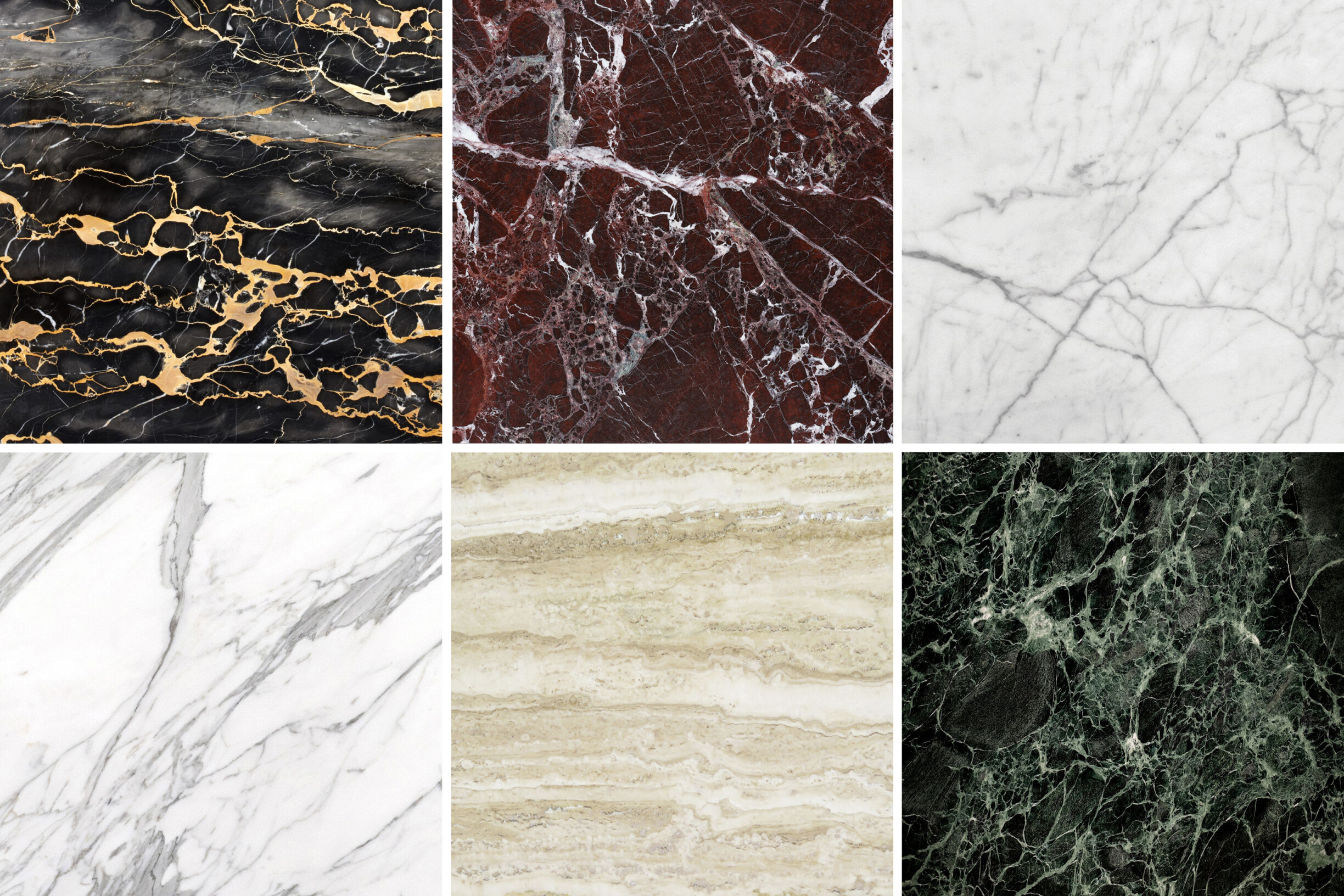
In Portugal, we have, for example, White Estremoz, which varies from white to cream, with reddish or black veins, and Green Viana, a white marble that presents a predominant green-coloured outlook and veins, which can vary from light green veins to quite green darker areas. Extracted from the Greek island of Thassos, we have a pure and crystalline white marble. From Spain comes Emperador marble, in a dark to medium brown tone with light veins, or Nero Marquina marble, a black marble with intense white veins.
These are just some of the most popular marble solutions. At ALMA de LUCE, we use several types of marble, but the Portuguese White Estremoz and Green Viana, the Spanish Negro Marquina and the Italian Carrara stand out.
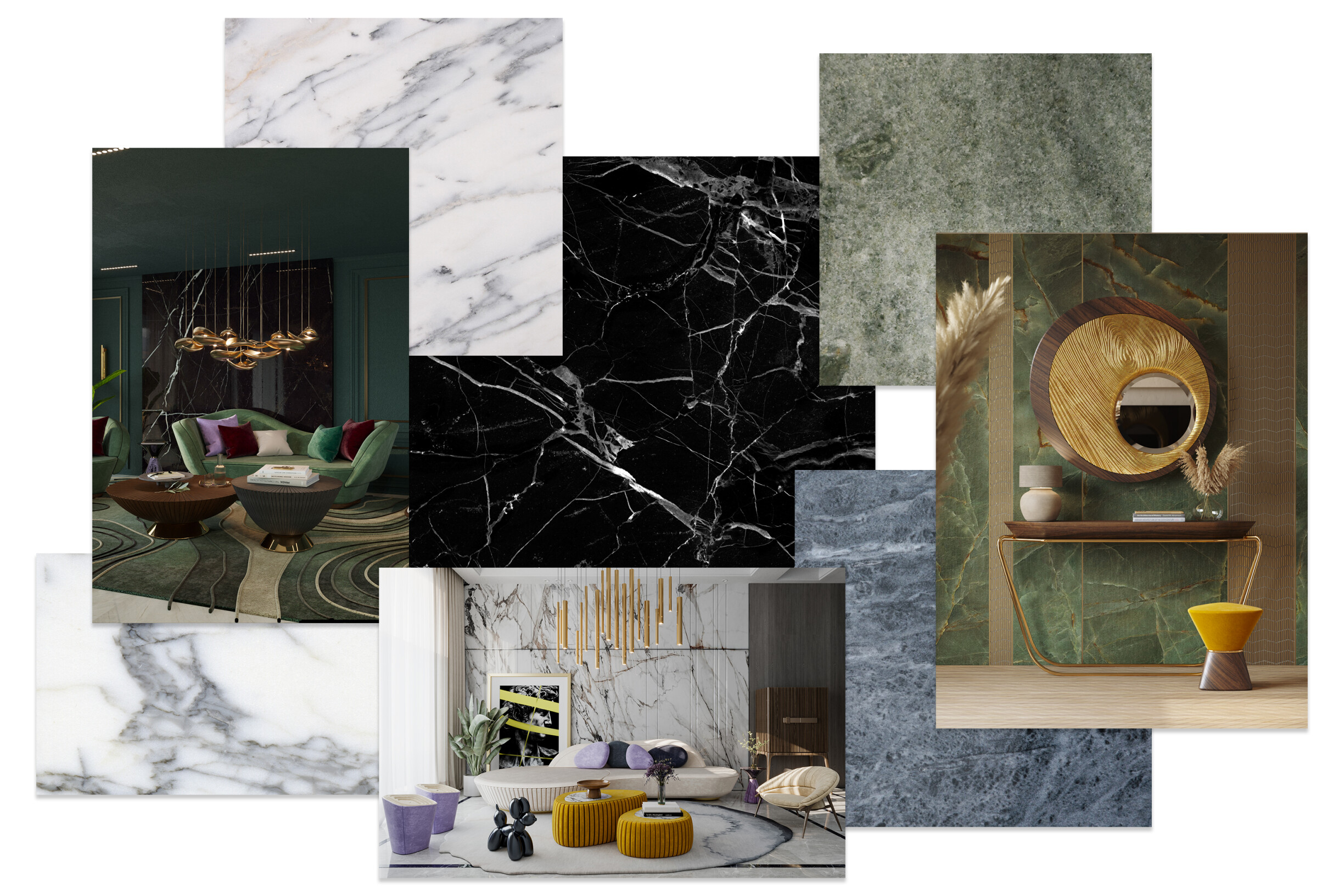
"Marble is the poetry of interiors; it adds a sense of luxury and permanence to any space.”
Kelly Wearstler
American designer Kelly Wearstler couldn't be more suitable. Marble is a choice that adds a layer of timelessness to any space. It is a luxurious material that can transform any space into an interior design masterpiece. Incorporating marble into your projects gives them a feeling of sophistication and elegance.
These are our 7 suggestions for using marble in interior decoration and ensuring your projects succeed.
The strategic use of marble in mirrors can instantly elevate the aesthetic of any space, providing timeless elegance and a sense of luxury.
A wall mirror with a Carrara marble frame in an entrance hall creates the illusion of space and introduces an aesthetically elegant and luxurious element from the moment you enter the house.
By integrating marble into your dining room, you can create a space of refined elegance that invites sophistication and style. The dining table is the heart of the room, and opting for a table with a marble top creates a stunning focal point. The Bonsai dining table from ALMA de LUCE makes the perfect center point of any dining setting, with the tabletop in white Estremoz Marble.
Additionally, we suggest coordinating the chairs with the table to create cohesion in the dining room design. You can choose chairs with bases with marble details or with upholstery whose tones complement the marble. Neutral colours or colours present in the veining of the marble are safe choices.
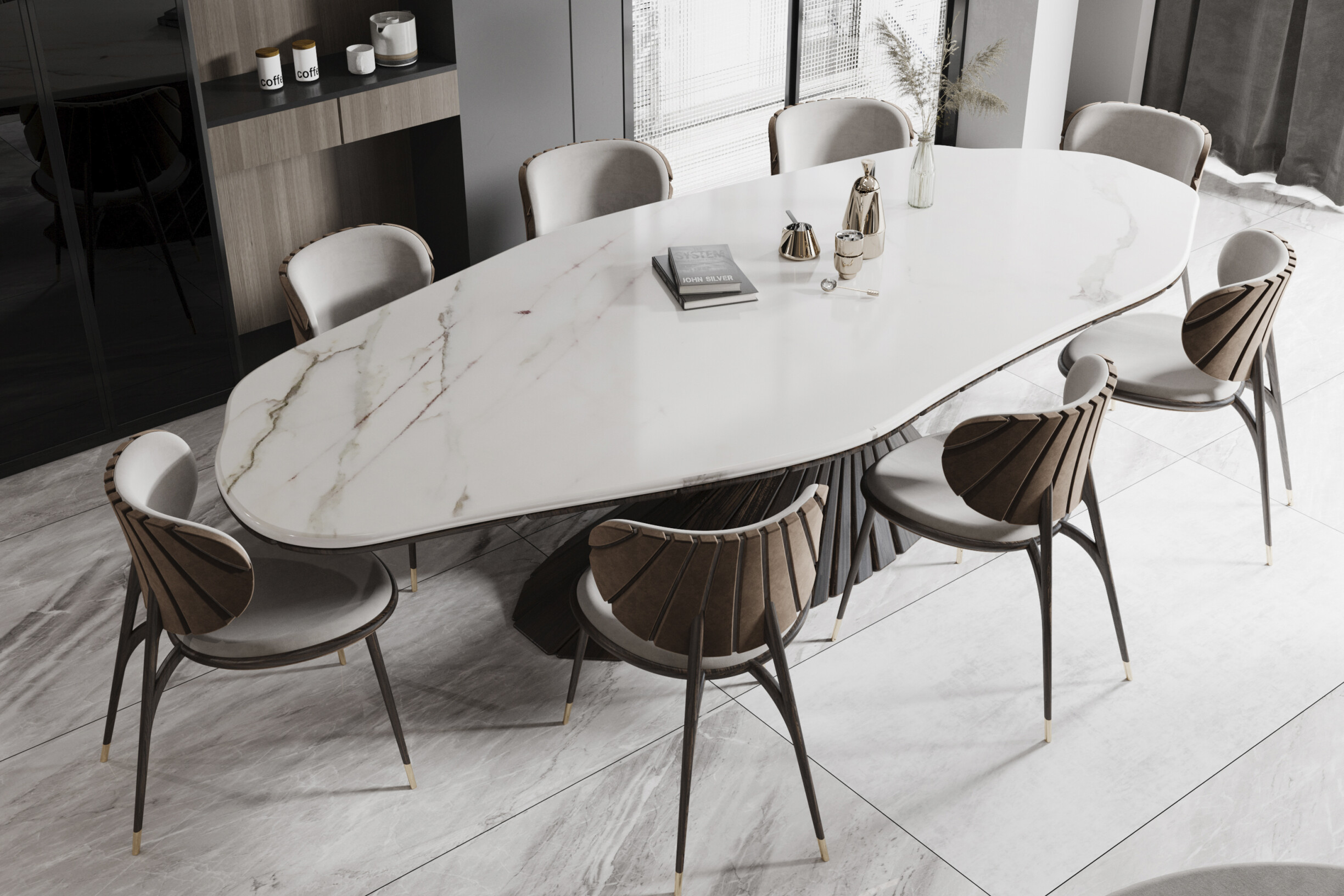
Integrating marble into a sofa may seem unusual, as marble is generally associated with hard surfaces, such as tables and countertops. However, there are creative ways to incorporate marble elements into the sofa design, namely through details in the structure.
Furthermore, one way to incorporate marble into your living room decor is through a bench like the Cappadocia stool from ALMA de LUCE. The upholstered super suede fabric looks perfect with the Estremoz marble top.
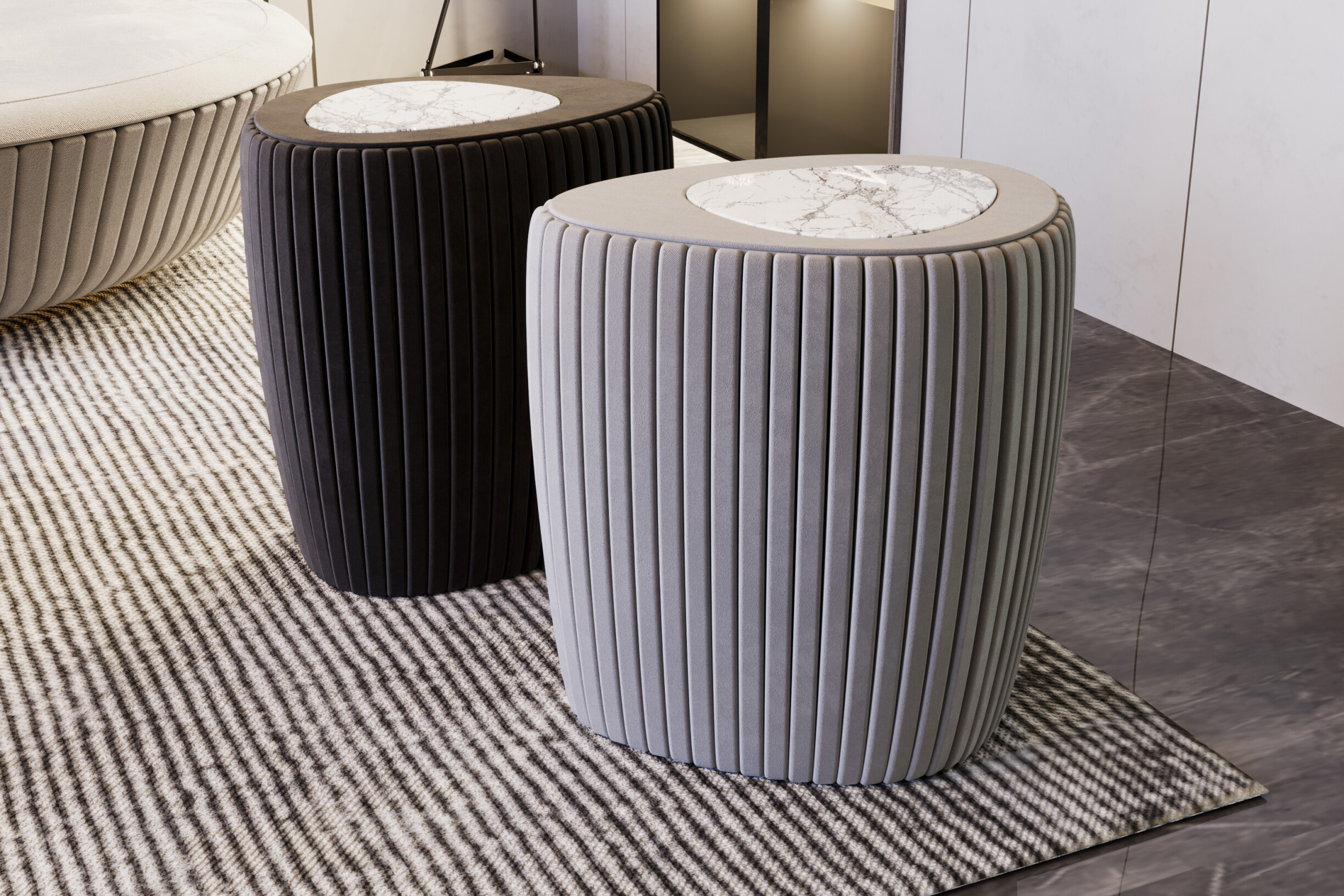
Integrate marble furniture details for a subtle and refined approach. Some pieces can unite all the elements of a space and boost the decor. More than decorative pieces, these give life and personality and tell a story.
A white marble coffee table in a neutral living room adds a touch of luxury without overwhelming the space. The contrast between the simplicity of the design and the opulence of the marble in the Roatan coffee table from ALMA de LUCE creates an attractive visual balance.
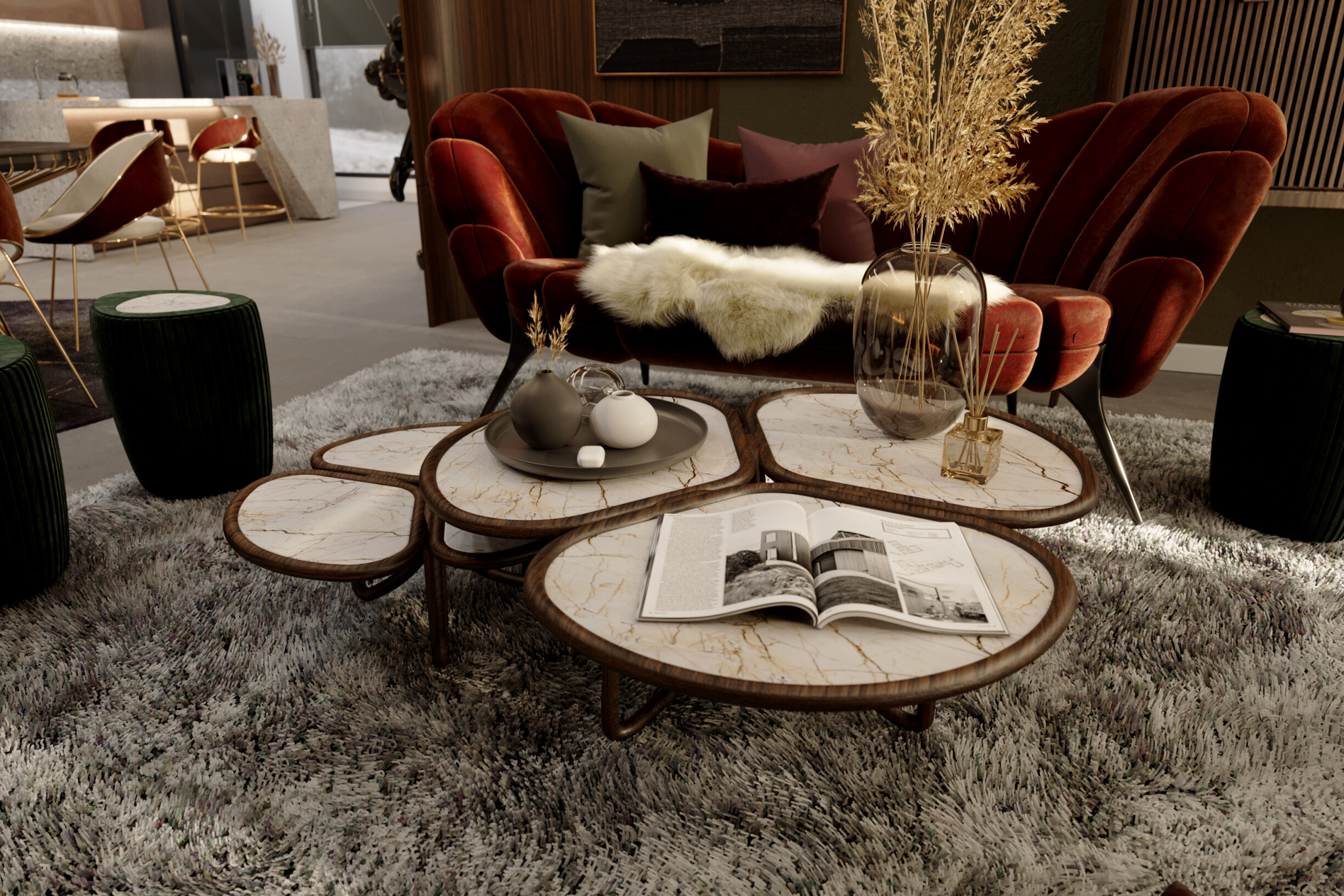
Are you designing a library or a home office and want to add a touch of beauty, uniqueness, sophistication, and elegance? You can opt for an office table with a marble top, table lamps with marble bases, office chairs, or armchairs with marble details, such as arms or bases.
But, if your idea is to incorporate a more prominent piece that is simultaneously functional, what do you think about opting for the Hikma display from ALMA de LUCE? With its footer in Marble Tiger Estremoz, this display is handmade, is a piece that can be made in different sizes, and is perfect for decorating a library or the living room of someone who loves to read books.

Try combining marble with other materials, such as wood or metal, to create harmonious contrasts in your interior design projects.
For example, a dining table with a white marble top and metal base in a contemporary dining room balances the coolness of marble with the solidity of metal. On the contrary, combining marble like Creme Marfil with aged wooden furniture creates a rustic and welcoming atmosphere with a touch of sophistication.
It should be remembered that materials play a central role in determining the look and feel of a room, affecting the visual and emotional perception of spaces in many ways.
Marble is more than just a decorative material. Marble is a testament to the elegance that transcends eras and styles. Investing in marbled decor celebrates timeless beauty, craftsmanship, and the lasting connection between nature and design. Whether in functional surfaces, decorative elements, or furniture details, marble is a versatile choice that will delight your customers.
Stay tuned to our blog to receive more information and curiosities from the universe of architecture, interiors, and design!
Also, you can follow us on Instagram, Facebook, and Pinterest to get inspiration about interior architecture styles, furniture, materials, and finishes!